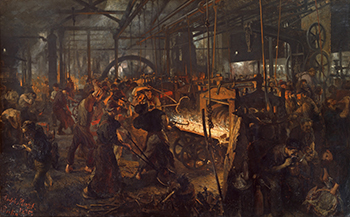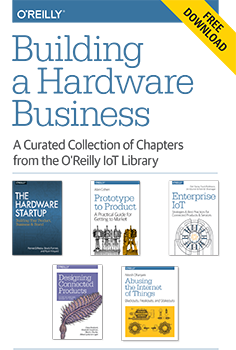"rapid prototyping" entries

Robert Bodor on digital fabrication
The O’Reilly Solid Podcast: Software intelligence in the manufacturing process.
Subscribe to the O’Reilly Solid Podcast for insight and analysis about the Internet of Things and the worlds of hardware, software, and manufacturing.
In this episode of the Solid Podcast, David Cranor and I talk with Robert Bodor, vice president and general manager for the Americas at Proto Labs, a rapid-prototyping service that’s been able to digitize large parts of the fabrication process.
Discussion points:
- Proto Labs’ contribution to the Pop-Up Factory at the Solid 2015 conference
- How Proto Labs infused software into the injection molding process, enabling 24-hour turnaround on tooling
- 3D printing vs. injection molding (that old battle)
- Parts of the process that defy automation
- The pros and cons of in-house prototyping

For hardware startups, technology enables scale
Turning a hobby into a company just got a lot easier.
Download a free copy of “Building a Hardware Business,” a curated collection of chapters from our IoT library. Editor’s note: this post is an excerpt from “The Hardware Startup,” by Renee DiResta, Brady Forrest, Ryan Vinyard, which is included in the curated collection.
Over the past five years, we’ve begun to witness the emergence of Maker pros: entrepreneurs who started out as hobbyists and now want to turn their creations into full-fledged companies. The difference between a project and a product is the difference between making one and making many.
To turn a project into a company, the product has to be scalable. “Making many” has traditionally been a problem of cost and accessibility; it’s historically been both expensive and difficult to manufacture. Growing a company further requires keeping costs low enough to profit, setting up distribution channels, and managing fulfillment. Over the past few years, several trends have combined to create an environment that’s mitigated those problems. This has resulted in the growth of a hardware startup ecosystem.
Rapid prototyping
Advances in rapid prototyping technologies have fundamentally changed the process of taking an idea from paper to the physical world. Hobbyist and prosumer-level 3D printers, CNC routers, and laser cutters have altered the landscape of personal fabrication, enabling quick and affordable iteration. While 3D printing has been around since the 1980s, the cost of a machine has dropped dramatically. Materials such as metals and ceramics enable higher-fidelity models. Cloud-based fabbing services, such as Ponoko and Shapeways, can produce a single prototype and ship it to you within a week — no need to own the printer yourself! Inexpensive boards (such as Arduino, Raspberry Pi, and BeagleBone) make electronics prototyping accessible to everyone. As interest in the Internet of Things has grown, products such as Spark Core and Electric Imp (startups themselves) have hit the market to make connected-device prototyping fast and easy. Simultaneously, computer-aided design (CAD) software has become more sophisticated, more affordable, and easier to use. Read more…

Innovation requires a new mind-set: The O’Reilly Radar Podcast
Tim O'Reilly and Carl Bass discuss the future of making things, and Astro Teller on Google X's approach to solving big problems.
Editor’s note: you can subscribe to the O’Reilly Radar Podcast through iTunes, SoundCloud, or directly through our podcast’s RSS feed.
I recently lamented the lag in innovation in relation to the speed of technological advancements — do we really need a connected toaster that will sell itself if neglected? Subsequently, I had a conversation with Josh Clark that made me rethink that position; Clark pointed out that play is an important aspect of innovation, and that such whimsical creations as drum pants could ultimately lead to more profound innovations.
In the first segment of this podcast episode, Tim O’Reilly and Autodesk CEO Carl Bass have a wide-ranging discussion about the future of making things. Bass notes that innovation tends to start by “looking at the rear window”:
“The first naïve response is to take a new technology and do the old thing with it. It takes a while until you can start reimagining things…the first thing that you need is this new tool set in software, hardware, and materials, but the more important thing — and the more difficult thing, obviously — is a new mind-set. How are you going to think about this problem differently? How are you going to reimagine what you can do? That’s the exciting part.”

